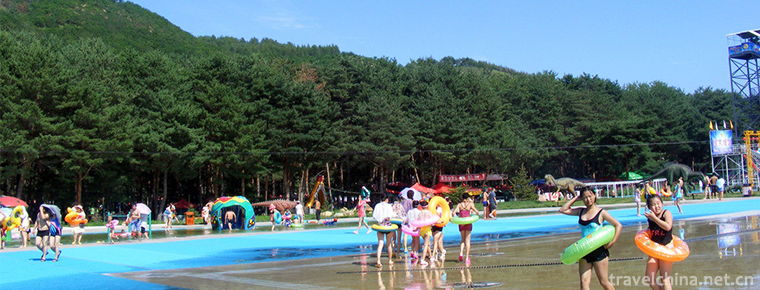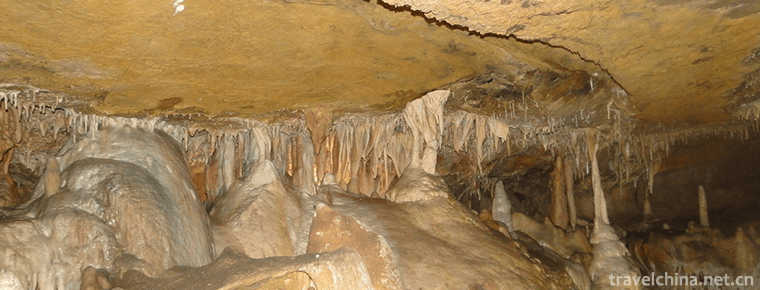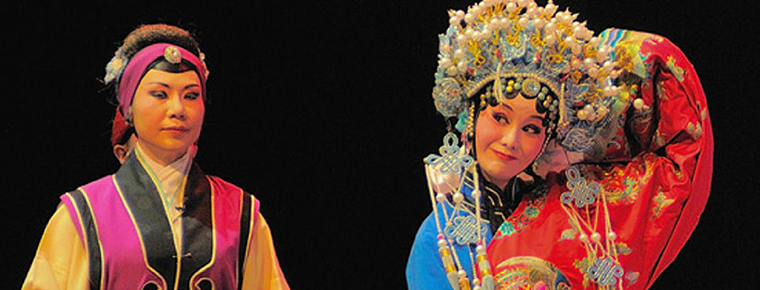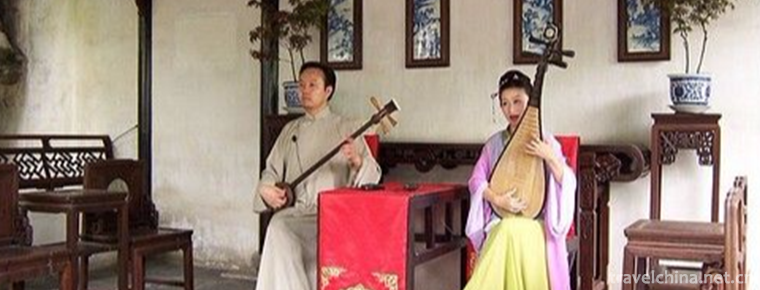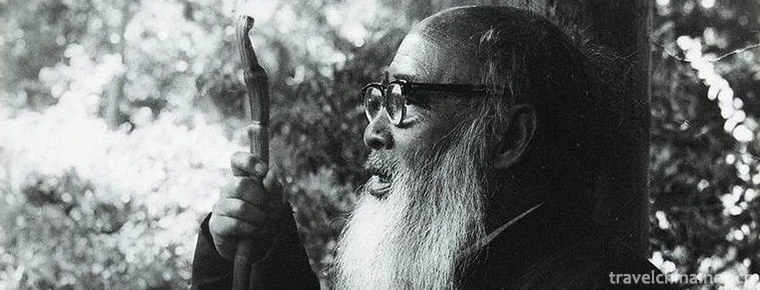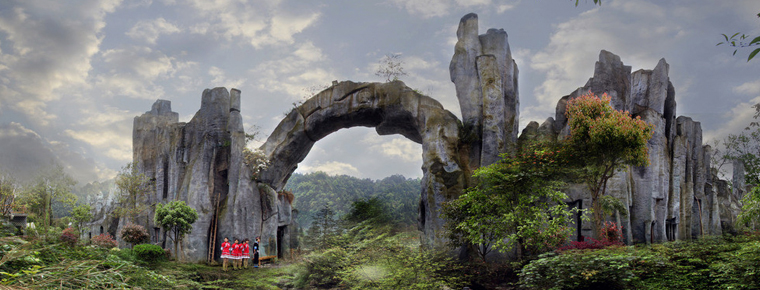Lushan National Forest Park
Lushan National Forest Park
Located in the center of Shandong Province, Lushan National Forest Park is an important scenic spot of Boshan Scenic Tourist Area, with its main peak at 1108.3 meters above sea level, the highest peak in Shandong Province and its area of 42 square kilometers.
The park is planned for more than 140 scenic spots such as botanical garden, Guanyunfeng, Mingshi Mountain, Hualin, Donghai, Beiping six scenic spots and Yunhai Sunrise, Sixiong Competition Show, Monthly Hearing Tao, Summer Bird Club, Wanshi Labyrinth, Camel Zen Temple, Ghost City, Front Line Sky, Cloud Ladder Wonderland, Zaoshuyu and Dengtian Valley Falls, Mingshi Mountain Qishi, Daogou Forest Bath, Beiping Jiangnan Water Township, etc.
The forest coverage rate is 95%. There are more than 1300 kinds of plants, 168 kinds of birds, 22 kinds of mammals and 561 kinds of insects, which can be called the kingdom of animals and plants in central Shandong.
Historical Evolution
Lushan was once a Royal horse farm in the Yuan, Ming and Qing dynasties of China. After the founding of the People's Republic, it was also the first state-owned forest farm established by the state. Its ecological environment has been completely protected, with few human traces.
Lushan Camel Zen Temple, which was built in the reign of Emperor Liang Wudi in the Southern and Northern Dynasties, has been more than 1400 years since then. It is the most prosperous temple in Lushan area.
geographical environment
geographical position
Lushan is located in the southeast of Zibo City, the most central part of Shandong Province. Guanyunfeng, the main peak of Lushan Mountain, is the fourth highest mountain in Shandong Province and the highest peak in central Shandong Province. It is located at the junction of Chishang Town in Boshan District of Zibo City and Tumen Town in Yiyuan County.
Climate temperature
Lushan is a warm temperate continental humid monsoon climate, rich in annual precipitation (annual average precipitation of 700 mm), is the birthplace of Zi, Wen, Mi and Yisi rivers. The annual average temperature is 12.4 (?) C, and the annual maximum temperature is 17.8 (?) C. Since ancient times, there has been a saying that "the scenery of Mount Lushan is quiet, and summer in June becomes autumn".
Species conservation
The scenic area of Lushan Botanical Garden covers an area of 7000 mu. It runs through the whole garden along the main road to the foot of Guanyunfeng. Cuizhu Garden, Chestnut Garden, Magnolia Garden, Pine and Cypress Garden, Robinia pseudoacacia Garden, Red Leaf Garden and other parks have begun to take shape. The Metasequoia glyptostroboides and Ginkgo biloba in the garden belong to the first-class protected plants of the state; Zoysia sinensis, wild soybean and Tilia amurensis are the second-class protected plants of the state; there are three plants listed in the Convention on International Trade in Endangered Species of Wild Fauna and Flora; there are four plants listed in the Red Paper of China's Rare and Endangered Plants; there are 26 species listed in the Rare and Endangered Plants of Shandong Province.
Tourist attractions
Zaoshuyu Waterfall
The waterfall is located because of the constant dripping of water all the year round, dripping like silk, also known as dripping cliff. The landscape of Zaoshuyu Waterfall varies from year to year. In spring and autumn, rainwater is scarce, waterfalls hang like bead curtains and float with the wind. In the middle of winter, ice carved jade hanging, crystal clear, a glazed world. In midsummer, especially after the beginning of thunderstorm, waterfalls flow down, such as the galaxy pouring down, Bailian hanging, the sound of water dropping like thunder, deafening, hearing for miles.
Flower cliff
Huaya is located on the southern slope of Zaoshuyu, where the mountain is steep and steep. There are large amounts of wild azaleas at the top of 800 meters above sea level, and more than 1000 mu of Forsythia in the middle and lower parts.
Aerial ladder
Lushan ladder is a step cut from a steep bare rock boulder. It is not as long as the eighteen plates of Mount Tai, but more dangerous than the eighteen plates. There are 302 steps on the ladder, which means to wish you good luck in succession.
rainforest
Rainforest scenic area, with verdant pines, low vines, green grass, lush mountains and flowers, beautiful forest environment, makes the air here particularly fresh and clean. It is a natural forest bathing ground. The content of negative oxygen ions, known as "vitamins" in the air, reaches 1800-2000 per cubic meter, which is 20 times higher than that in the air of industrial cities, and is praised as "natural oxygen bar" by experts and scholars.
Liang Wang Quan
Liang Wangquan is a clear spring located at an altitude of more than 900 meters in Lushan. Legend has it that when King Liang led his troops through this area, because of the hot weather, everyone was thirsty and impatient. King Liang sent people out to look for water, but they failed to return. The soldiers were also reluctant to go, and the march was interrupted. King Liang was very anxious. He jumped out of his horse and sat on the ground. It didn't matter. In a short time, where he had been sitting, there was a gushing spring. If you look carefully, there are still traces of people sitting around the spring mouth.
Wan Shi maze
The Wanshi Labyrinth covers an area of more than 300 mu. It is divided into the South, the Middle and the North Labyrinth. The roads in the Labyrinth are connected with each other, and the caves are connected with each other.
Labyrinth is a natural scaffold cave formed by numerous huge rounded "stone eggs", which is called "stone eggs landform" in geology. It is very rare in North China that such a large area of eggs is gathered at an elevation of nearly 1000 meters.
A Sky in Lushan
Lu Shan is about 100 meters long and 20 meters high. It is only tolerant of passing by by one person. It is unique in North China through expert research. Only by crossing a line of days can we fully understand the artistic conception of "a line of light through a stone gap and a thousand years of scenery in the dust".
Wolong mountain
Standing on the watchtower, turning around and looking back, the "Wanshi Labyrinth" just passed has become a giant dragon, sitting among the green trees and pines. See it head up to the sky, dragon tail high, scales and claws flying, is about to take off. This mountain is Wolong Mountain.
Cloud bee
Guanyun Peak, the main peak of Shandong Province, is 1108.3 meters above sea level, the highest peak in Shandong Province and the fourth highest mountain in Shandong Province. Peak climbing is extremely eye-catching, surrounded by vast forests, villages, winding rivers, rolling mountains, making people relaxed and happy, reverie thousands of times; encounter excellent weather, clouds steaming clouds, Taishan, Mengshan, Lushan, Yishan main peak like islands floating on the sea of clouds, "four heroes competing in beauty" is spectacular. At the top of Guanyunfeng, there is Bixia Yuanjun Temple. According to legend, Grandma Taishan travels all over the world to make all living beings live in harmony. One day, when she came to Lushan, she saw the beautiful water, beautiful mountains, deep valleys and beautiful flowers. She couldn't help liking it. She named Lushan as one of her palaces and called it her "back garden".
Camel monastery
Camel Chan Temple was built during the reign of Emperor Liang Wudi in the Northern and Southern Dynasties. It consists of Daxiong Palace, Zhigong Pagoda and Zhigong Temple. It has been more than 1400 years since then. It is the most popular temple in Lushan area. Lushan Temple Fair is held on March 15 of the lunar calendar every year. There are thousands of pilgrims in all directions. The origin of the name of Tuo Chan Temple is that the Zhigong donkey will be rolled up from Hangzhou and ten donkeys will be fatigued along the way. Zhigong read that the donkey's piling Scripture rolled up meritorious, so he named the temple Tuo Chan Temple. Another way of saying is that the whole mountain range of Lushan is in the shape of a dragon, and the monastery is just built on the back of the dragon. The dragon is carrying the monastery, so it is called Camel Zen Monastery.
Tourism information
Lushan Mountain Hotel
Lushan Forest Park Lushan Hotel was newly built in 2005. The building area of Lushan Hotel is 6000 square meters. It is built according to three-star standard. The interior and exterior decoration is natural and elegant. Built-in luxury suites, standard rooms, conference rooms, banquet halls, business centers, entertainment centers and other facilities, can accommodate 300 people meeting, 200 people accommodation and 1000 people dining, catering, guest rooms, meetings, business, entertainment, leisure, vacation in one.
Lushan Mountain specialty
Lushan Mountain coarse cereals
Lushan Mountain is located in Lushan District, far away from the city without chemical pollution, fresh air, pure water quality, produced grains, beans and other small miscellaneous grains, high quality, natural green food, is a necessary food for health and recuperation.
Lushan Mountain peach
Lushan peach is sweet and fragrant with excellent quality. From the beginning of July to the end of September, the varieties have matured and listed in turn, and are exported to Beijing, Nanjing, Guangzhou and other large and medium-sized cities.
Lushan Mountain honey
Lushan has abundant vegetation and a wide variety of nectar plants (including more than 200 medicinal plants). It produces a large amount of honey with high quality, transparent and transparent color and taste. Regular use not only strengthens the body, but also has the effect of prevention and adjuvant treatment for a variety of diseases.
Lushan Mountain almond
Almond is rich in nutrients, and its carotene content is second only to mango in fruit, so it is called anti-cancer fruit. Lushan almond is a good health food, which is full, delicate and sweet.
Lushan Mountain scorpion
"Compendium of Materia Medica" records that scorpion has the effect of clearing heat and detoxification, relaxing tendons and activating blood circulation, and improving human immune function. Scorpion is rich in nutrition, but also an important tonic and health products. Lushan Scorpion is a pure natural wild living scorpion with unique efficacy and is one of the unique mountain treasures of Lushan.
Lushan Mountain mushroom
Lushan mushroom is one of the wild mountain treasures in Lushan. It is pure natural, pollution-free, nutritious and delicious.
Lushan Mountain chestnut
According to the Compendium of Materia Medica, cooked chestnut can enrich Qi and blood, nourish stomach, invigorate kidney, invigorate liver and spleen, and raw chestnut has the effect of treating pain in waist and leg, relaxing tendons and activating collaterals. Lushan Castanea mollissima is one of the famous dried fruits in North China.
Lushan Mountain Platycodon root
Platycodon grandiflorum is the main medicine for throat swelling and pain. It has high medicinal value and edible value. Lushan Platycodon grandiflorum is a traditional authentic medicinal material, a high-quality health food, and a local export earning foreign exchange product. It mainly exports to Korea, Japan and Southeast Asian countries.
Self driving route
Boshan (Zibo): Boshan Shantou Badou Nanzhuang Gushan Source Xiaofengkou Lushan
Zibo: Zibo (Binbo Expressway) Boshan to Lushan
Jinan: Jinan (Jiqing Expressway)Zibo (Binbo Expressway)Boshan to Lushan
Qingdao: Qingdao (Jiqing Expressway)Zibo (Binbo Expressway)Boshan to Lushan
Weihai: Weihai (Yantai Tong (State) Sanya Expressway) Weilai Expressway Jiqing Expressway Zibo (Binbo Expressway) Boshan to Lushan
Weifang: Weifang Qingzhou Linqu Sancha Chihang Xiaofeng Kou Lushan
Dongying: Dongying Dongqing Expressway Jiqing Expressway Zibo (Binbo Expressway) Boshan to Lushan
Dezhou: Dezhou Beijing-Shanghai Expressway Jiqing Expressway Zibo (Binbo Expressway) Boshan to Lushan
Liaocheng: Liaocheng Jinan (Jiqing Expressway) Zibo (Binbo Expressway) Boshan to Lushan
Taian: Taian (Tailai Expressway)Laiwu (Bolai Expressway)Boshan to Lushan
Heze: Heze Ridong Expressway Jingfu Expressway Taian (Tailai Expressway) Laiwu (Bolai Expressway) Boshan to Lushan
Special Travel Line (Zibo-Lushan)
The train departs from the west gate of Zibo Museum at 7:00 a.m. and returns at 4:00 p.m. On holidays and weekends, groups are not subject to time restrictions.
Self-service bus route
Boshan takes Bus No. 13 to Xiaofengkou Station to get off and transfer to Mountaineering Tourist Bus.
Park Address
Lushan National Forest Chishang Town, Boshan District, Zibo City, Shandong Province
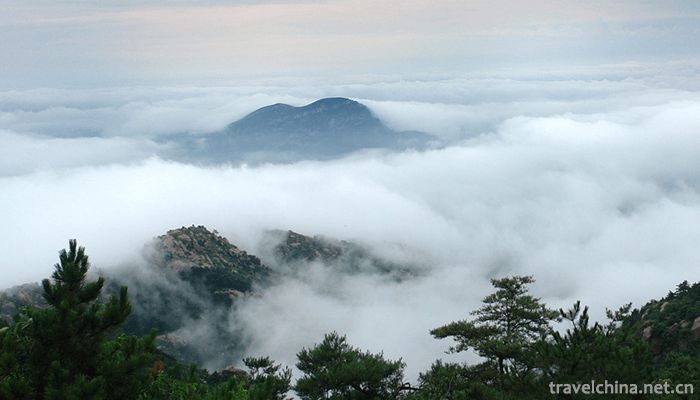
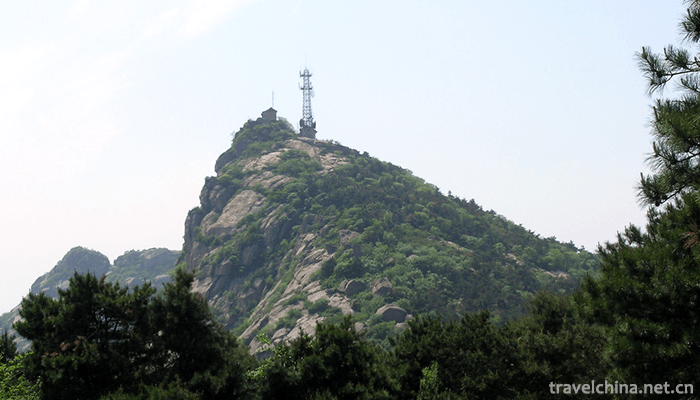
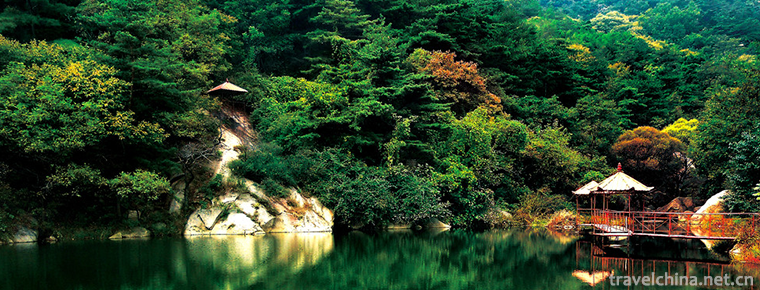
Lushan National Forest Park
-
stired egg and tomato
Scrambled eggs with tomatoes, also known as tomato scrambled eggs, is a common popular dish among many people's families. The cooking method is simple and easy to learn, and the nutrition is reasonabl
Views: 230 Time 2018-10-27 -
Yilong Water Custom Park
Yilong Water Custom Park was built in 1996, covering an area of 100 hectares. It was solely operated by individuals and formally opened in June 1997.
Views: 384 Time 2018-12-22 -
Lushan Karst Cave Group Scenic Area
Yiyuan Karst Cave Group is located in Nanlushan Town, 7 kilometers northwest of Yiyuan County. It has been proved that there are more than 100 caves in the area of 5 square kilometers around the ape-m
Views: 183 Time 2019-02-06 -
Chu opera
Chu Opera, a local traditional drama in Hubei Province, is one of the national intangible cultural heritage.
Views: 233 Time 2019-04-18 -
Danzhou tune
Danzhou tune is a traditional folk song which only spreads in Danzhou of Hainan Province and has a unique regional style. It is sung in Danzhou dialect with a lively rhythm
Views: 149 Time 2019-04-25 -
suzhou pingtan
Suzhou Pingtan is the general name of Suzhou Pingtan and Suzhou Pingtan Ci. It is a traditional form of opera and opera that uses Wu dialect to speak and perform freely. It came into being and became
Views: 90 Time 2019-06-17 -
Wuqiao acrobatics
Wuqiao acrobatics is a traditional folk acrobatics art in Hebei Province. Referring to the "acrobatics town" people are often referred to as Wuqiao County, Cangzhou City, Hebei Province. Acc
Views: 148 Time 2019-06-29 -
Zhang Daqian
Zhang Daqian (Chang Dai-Chien, May 10, 1899 - April 2, 1983), formerly known as Zheng Quan, was renamed as yuan, Ji Yuan, Hao Da, alihao Dai Ju Shi, Xia Li Hong Kong people, Zhai Da Feng Tang. Sichuan
Views: 313 Time 2019-09-04 -
Yamugou scenic spot
Yamugou scenic spot is located on the Bank of Taiping River (a famous scenic spot in Guizhou Province) in Jiangkou County, Tongren City, Guizhou Province, adjacent to Fanjing Mountain (National Nature Reserve, China's top ten famous summer resort).
Views: 172 Time 2020-10-13 -
Diexi earthquake site
Diexi earthquake site is located 2.5 km southeast of Jiaochang Township, Maoxian County, on the second grade platform on the East Bank of Minjiang River
Views: 367 Time 2020-11-07 -
Time and reason of Ding Zhen popularity
Ding zhenhuo, a 20-year-old Tibetan Boy from Ganzi, Sichuan Province, was caught up in a short video of less than 10 seconds. The uploader of the video and the photographer "BOGO" who shot Ding Zhen also attracted netizens' attention. Talking about his first impression of Ding Zhen
Views: 295 Time 2020-12-06 -
Hydrology in Luzhou
There are many large, medium and small rivers in Luzhou, but the runoff of small streams is short. The rivers in the territory belong to the Yangtze River system, with the Yangtze River as the main trunk, distributed in a tree shape, and flow into the Yangtze River from south to North
Views: 395 Time 2020-12-14

